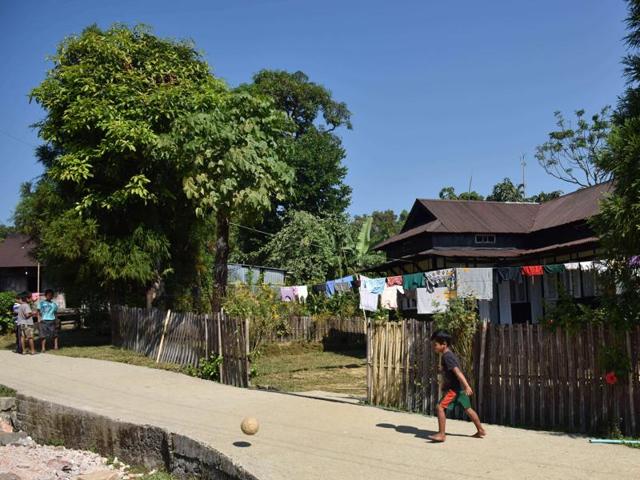Meghalaya’s Mawlynnong: The cleanest village in Asia
Updated On Dec 28, 2015 05:53 PM IST
1 / 7

Updated on Dec 28, 2015 05:53 PM IST
Much before Prime Minister Narendra Modi began Swachh Bharat Abhiyan, a remote village in Meghalaya called Mawlynnong, had earned the reputation of being the cleanest village in Asia. A Khasi villager walks along a lane in Mawlynnong in this photograph taken on November 8, 2015. (AFP)
2 / 7

Updated on Dec 28, 2015 05:53 PM IST
The title ‘cleanest village in Asia’ was given by Discover India Magazine in 2005 and reinforced by the BBC, UNESCO and National Geographic, says Conde Nast Traveller. Khasi tribal villagers walk past a bamboo dustbin placed beside a road in Mawlynnong, Meghalaya on November 8, 2015. (AFP)
3 / 7

Updated on Dec 28, 2015 05:53 PM IST
According to a report in BBC, all the residents of the village can read and write and each house has a toilet. People of Meghalaya’s Khasi tribe go about doing their chores in Mawlynnong on November 8, 2015. (AFP)
4 / 7

Updated on Dec 28, 2015 05:53 PM IST
Rubbish is thrown into a pit dug near the village where it is left to turn into compost and plastic bags are banned, says BBC. A child uses a bamboo dustbin placed beside a road in Mawlynnong, Meghalaya. (AFP)
5 / 7

Updated on Dec 28, 2015 05:53 PM IST
Arecanut is the main produce of Mawlynnong. According to Mint, arecanut is highly susceptible to disease and sensitive to dirt, so the locals have to keep themselves and their surroundings clean. This fact could have contributed to the village’s sense of cleanliness and hygiene. A Khasi woman dries clothes outside her home in Mawlynnong, Meghalaya, on November 8, 2015. (AFP)
6 / 7

Updated on Dec 28, 2015 05:53 PM IST
In this photograph taken on November 8, 2015, a child plays football in Mawlynnong, Meghalaya. (AFP)
7 / 7

Updated on Dec 28, 2015 05:53 PM IST



